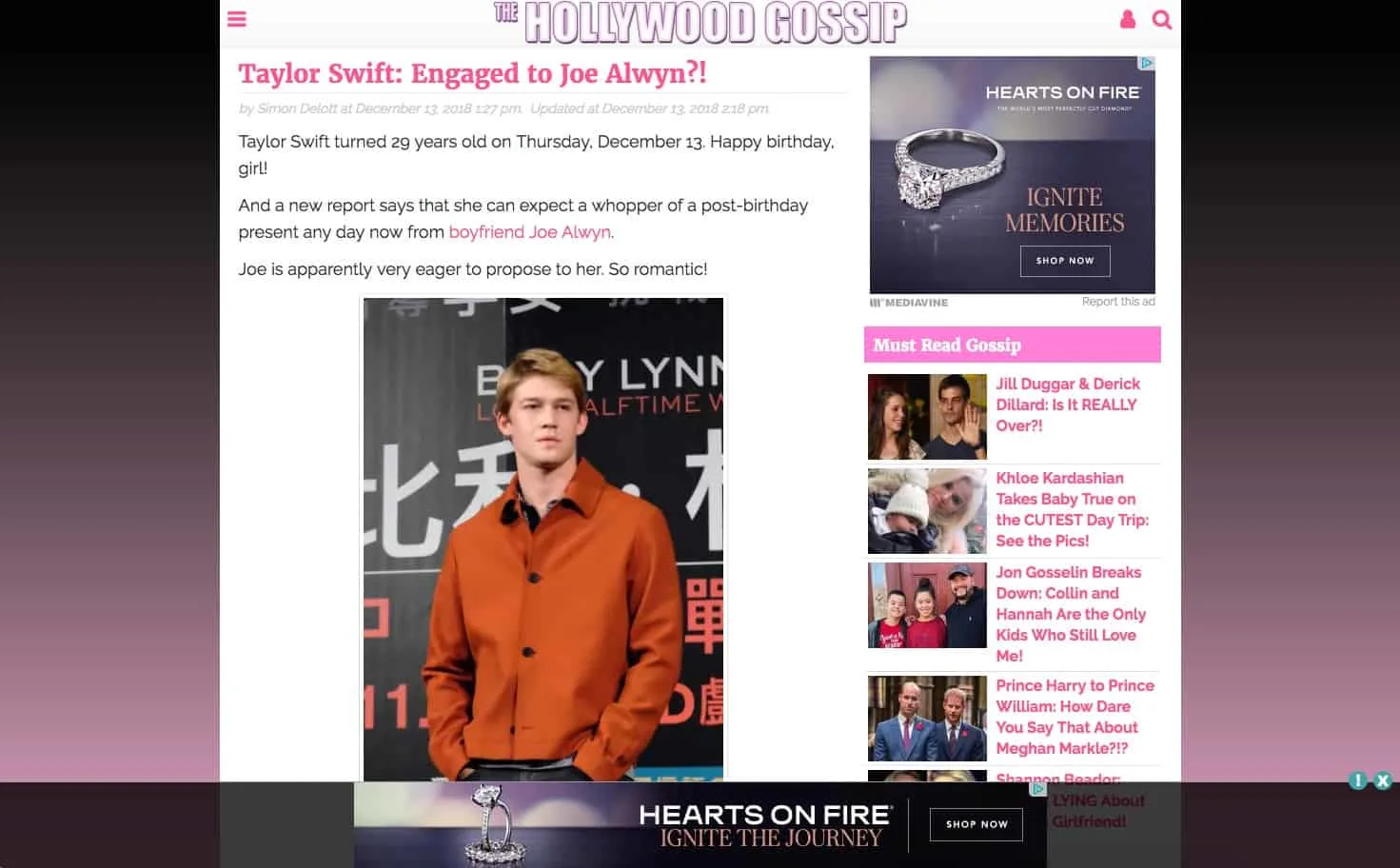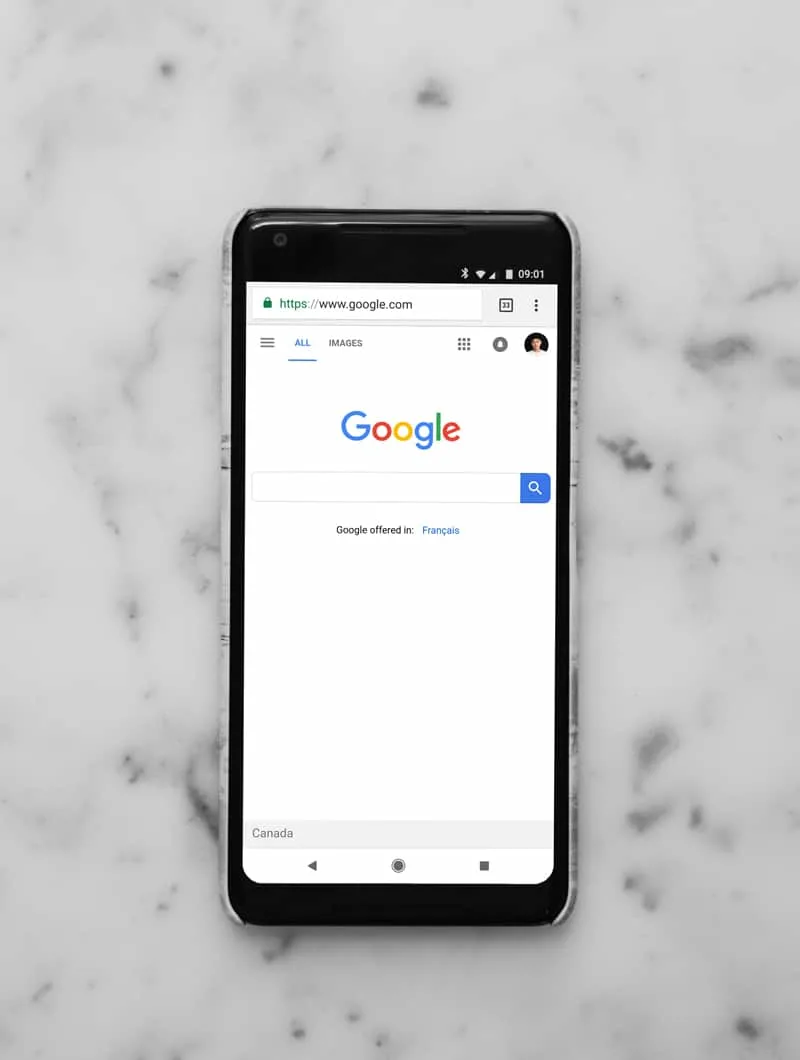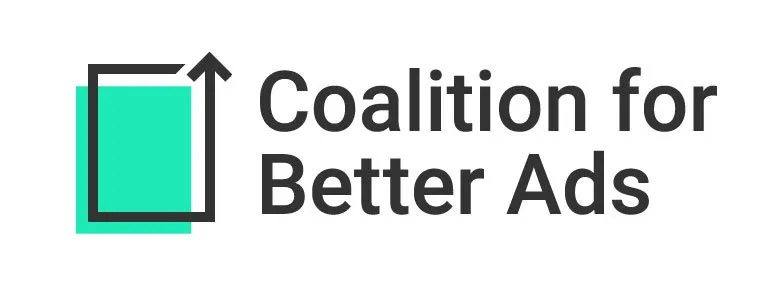SEO and Ads: Fact vs. Fiction and How Mediavine Optimizes Both Together


When you think of SEO, you generally don’t think of ads. With good reason.
By definition, advertising runs counter to the goals of optimizing for SEO, a process which relies on a focus on your content and user experience.
However, as an ad management company that started as an SEO marketing firm, we have found the perfect balance, ensuring that the two can work together.
Yes, you can run high-performing ads and still rank well in search engines thanks to Mediavine’s ad technology. It’s not an either-or scenario, and we’ll tell you why.
But first …
First, a little bit about how Mediavine knows this first-hand: I’ve actually been doing SEO since my high school internship in 1998 (I’m literally dating myself).
We founded Mediavine as an SEO-for-hire business back in 2004. Two years later, we used our expertise to launch our own site, The Hollywood Gossip.

Three dudes who knew nothing about celebrity gossip, but a lot about SEO, were able to turn a $10 domain into one of the largest entertainment sites on the Internet.
You can read more about the sites Mediavine owns and their role in our company in Steve’s much better blog post, my point isn’t to brag about how large THG is.
The takeaway here, from a decade-plus of building a site of this size, is that THG search traffic was destroyed by ads using third party ad management companies.
In a desperate effort to make a living, THG was loaded up with bad, slow ads. We watched our SEO falter and our traffic drop by more than 50 percent.
But fear not, this story has a happy ending.
With literally no other change in our SEO strategy beyond a focus on page speed and our own ad technology, THG recovered and is bigger than ever, with consecutive years of record growth.
With Mediavine, publishers have that same ad technology.
With it, you can excel at both SEO and ad performance.
In this blog post, I want to share the secrets behind our ad tech — strategies you either get for free with Mediavine, or can implement on your own — and how ads and SEO coexist.

If you’re not aware after 90 million blog posts from Google and Mediavine, mobile page speed is an official ranking factor and Google offers tools like PageSpeed Insights to directly measure it.
This is one of the few ranking metrics that Google, which is notoriously secretive about its search algorithms, is so public about. They give you literal tools to test it! Take advantage.
There are many things publishers can do to improve page speed overall, but one of the biggest potential slowdowns you’ll need to deal with are ads. Because …
![]()
An ironic statement coming from an ad management company, but if you don’t implement the right strategies, it’s true. Ads can potentially destroy user experience and your website with it.
Every ad loads inside an iframe, which means you can think of each ad as loading its own website. They’re much “heavier” than just an image, as they appear to you.
Think of it this way: If you run five ads at the time your page loads, you’re effectively loading your site PLUS five more. Six websites at a time. So what can you do?
Ads are ultimately run by third parties. Third parties NOT named Mediavine. More irony: In the world of programmatic advertising, we have no control over ads themselves.
However, our job as your ad management company is to make ads suck less, streamlining the process so advertising gets out of the way of SEO through techniques like …

Asynchronous means ads can load at the same time as your content, unlike synchronous, where each object loads one at a time.
My favorite analogy is a highway:
Synchronous is like having a single lane of traffic. If a single car stops, no one else can continue until it moves out of the way.
Asynchronous, by contrast, provides multiple lanes so that a single car, or ad, can’t stop the rest of the traffic, or page, from loading.
Luckily, just as most highways have multiple lanes, nearly all advertising has moved to asynchronous loading. That’s an important first step. Mediavine has been loading our ads this way since we launched our ad technology, and our Script Wrapper has been loading asynchronously for years.
Okay, so problem solved? Not at all.
A web browser has no idea how to prioritize these lanes of traffic and they’re all trying to get to the same place. So we’re still stuck in a traffic problem.

Mediavine uses lazy loading, which is sort of what it sounds like. We only load ads as the user scrolls to them; most ad management providers load all ads at page load.
The reason this is important for page speed is that only ads that load within the first screen view are required to load at the time of the page.
It allows our technology to load only a few ads, not the full weight of the page.
Back to our highway analogy: Lazy loading provides optimal driving conditions, like fewer cars on the highway. The cars responsible for loading your site are faster.
Problem solved yet? No, but we’re getting there.
Reducing above the fold (ATF) ads, or ads that appear in the first screenview, is huge for page speed. If an ad isn’t loading in the first screen view, the site will appear to load faster (how Google measures it), since users don’t notice when an ad loads if it’s below the fold.
It’s out of their view while it has time to load. It also means the other, faster items in that first view port, such as content, have a better shot of loading quicker.
When combined with lazy loading, it means fewer ads loading at the time of page load. Back to the highway, again: We’re reducing the number of cars as the content tries to get through.
All solved? Not quite. There are still cars that aren’t content in the way of the content cars, but we’ve figured out a way to get everyone where they need to go, as quickly as possible.

Our exclusive, patent-pending feature, Optimize Ads for Mobile PageSpeed, takes lazy loading and asynchronous to another level. We like to think of it as lazy loading and the reduction of ATF ads on steroids when you enable this new option.
We’ll make sure there are ZERO ads above the fold and ZERO ads that load during page load. In other words, no ads competing with content as it attempts to load.
In our highway analogy, it’s as if we installed an express lane that only your content has access to.
That feature — again, exclusive to Mediavine and using our patent-pending technology — will get ads completely out of the way of mobile PageSpeed Insights scores such as Time to Interactive.
You can see The Hollywood Gossip scores a 90+ on nearly every page! While that’s tough to do on a standard WordPress site, this technology does allow anyone to achieve it in theory.
We also offer this feature for desktop as well, which removes ads from the first screenview. However, on desktop this can include the above-the-fold sidebar unit, along with the leaderboard unit. Removing these can lead to larger declines in revenue than the mobile option, so use caution when activating this feature. Please see our help guide for more information on activating this feature.
Now, page speed is fully in your hands, with ads cleared out of the way of content (and SEO) for the first time ever through a feature only available to Mediavine publishers.

You’ll often hear in SEO discussions that SEO follows user experience. Google uses this line quite a bit, which makes sense. Ultimately, the goal of search results is to return the best user experience.
When it comes to ads, UX is a little tougher to measure, because so much of it is subjective. Sure, Google will sometimes explicitly define bad user experiences like mobile pop-ups.
But for the most part, it leaves room for interpretation, therefore we hear a wide range of opinions about what advertising solutions are pleasing to all parties.
However, luckily, we can again turn to Google itself to make our goals a little more objective and not just the conjecture of other publishers, ad managers and SEO analysts.

Both Mediavine and Google are members of the Coalition for Better Ads.
In fact, the CBA is what Google uses to power its built-in Chrome Ad Filtering, and its Ad Experience Report in the Google Search Console.
Given that Google uses these guidelines to define bad experiences in its main SEO tool and browser, it makes sense that we look to the CBA standards to objectively define things like the number of ads per page, the types of ads we run, and the locations in which they appear.

The CBA has done extensive research when it comes to how many ads define a bad user experience, and what they found is that it comes down to density, not a single amount.
On mobile, that density is no more than 30% ads-to-content ratio.
We use that exact density measurement to power our in-content ads; you can never go higher than 30% in our dashboard and our default settings are actually below CBA standards.
Yet often we’ll hear an SEO analyst raise a concern about the number of ads. Again, that’s just conjecture and disproven by user studies done by the CBA.
The best analogy for this is none other than Facebook. The last time you scrolled through your personal Facebook feed, did you count how many ads you saw?
Of course not. Facebook will show an unlimited amount of ads as you continue to scroll, because it’s based upon density, not volume, and they too follow guidelines. The only person counting the total number of ads is the competition, and it’s not relevant.
All you need to worry about when it comes to the number of ads is the density, and Mediavine has you covered by never allowing you to go above CBA standards. And, if you’re still concerned, you can simply lower the density in your Dashboard at any time.
As we mentioned earlier in our page speed advice, you’ll want to limit the number of above the fold ads, or ads in the first screen view. This isn’t just for page speed, but UX as well.
Google has actually been advising publishers to reduce above the fold content ads since 2012. The reason is to engage users with your content as quickly as possible, and starting off with ads won’t do that. You want your content to be the first viewable thing.
This is why we phased out the leaderboard ad for Desktop users. It’s why we’ve never run above the fold mobile ads. It’s why we introduced Scroll to Play to make sure that the Mediavine video player could be pushed even further down.
There are definitely more bad ad experiences that are asking for trouble with Google and users alike, such as videos with autoplaying sound and pop-up ads. The good news is that Mediavine has never run questionable ad units like these and never will.

Okay, so does Mediavine HELP your SEO? Directly, no ad company can ever help your SEO. As mentioned above, the best-case scenario is ads not impacting page speed or user experience.
In that sense, Mediavine helps your SEO by not hurting it, which in itself can give publishers an enormous leg up on the competition. But we go much further than that.
We look to help you improve SEO by passing on knowledge we’ve learned over two decades (dating myself again) in the industry and amazing new tools like Create that we provide.
If you follow our blog, you’ll get plenty of advice on the technical side of things.
As we mentioned, SEO is in our DNA. It’s how we built The Hollywood Gossip, Food Fanatic and TV Fanatic. But more importantly, any advice we ever give you comes directly from Google.
For example, did you know that increasing your font size, which we recently discussed at length, is actually recommended by Google as an SEO audit as part of their Lighthouse tool?
If you’re following our blog, you’ll get plenty of insight like that.
Every time you hear us say something is for SEO on our blog, it will always link to an official Google source on the matter and not an interpretation from an unknown analyst.
These are best practices given to us by the largest search engine on the planet, and the one we’ve been optimizing for since 2004. Listening to Mediavine is listening to Google.

In reality, SEO isn’t about ads or even as much about the technical side of things, it’s about your content. Is your content the content Google wants to show users?
Ultimately, SEO will always be the work of the publisher and nothing we can do for you. But rather than seeing that as an obstacle, we look at it as an opportunity.
Amber, my fellow co-founder, and friend Josh run a great podcast, The Theory of Content, that really explores the content side of SEO (a.k.a. the important side).
As part of Mediavine’s mission statement to build sustainable businesses for content creators — and we’re content creators too — our goal is never to hurt your SEO.
Quite the opposite. In addition to keeping ads out of the way, we want to provide you tools and advice to help you grow your site for years to come.
Stay up to date with the latest from Mediavine
Welcome to the much-anticipated release of the fifth-annual edition of “The Best eCPM Days of the Year” calendar. Each year, we analyze historical trends to provide publishers with a graphical …
“Let’s talk about politics.” We know. This is a phrase absolutely no one wants to hear uttered around the dinner table or backyard barbecue these days. But hear us out. …
Ah, July. It’s a glorious month of sand-filled swimsuits, mosquito invasions, broken air conditioners and applying sunscreen only to look like cooked lobsters. It’s also the start of a new …